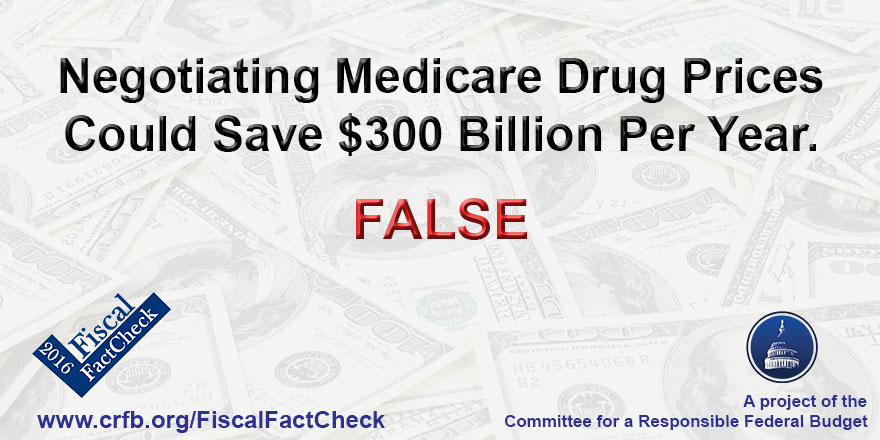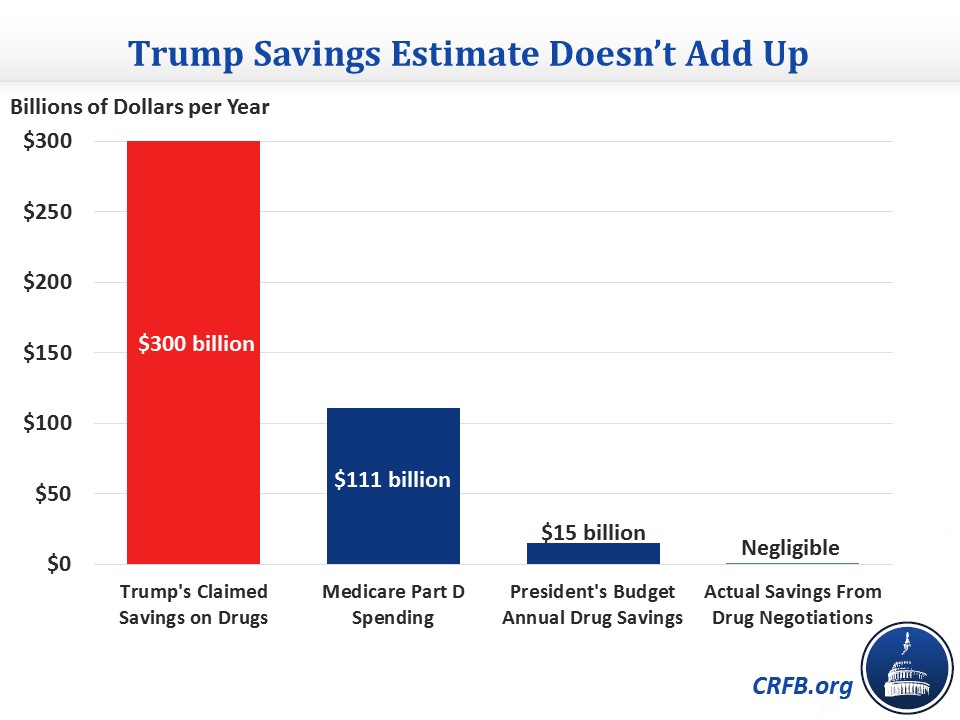Could Negotiating Medicare Drug Prices Save $300 Billion Per Year?

However, this amount of savings is impossible since it is far more than the government spends on prescription drugs. Even if it were possible, simply allowing Medicare to negotiate drug prices has been estimated to save a negligible amount for the federal government.
Since the Medicare Part D program was established in 2003, a number of proposals have been put forward to give the Secretary of Health & Human Services (HHS) the authority to negotiate drug prices on behalf of Medicare. But according to the Congressional Budget Office (and affirmed by the Office of Management and Budget), these proposals would save very little money because the Secretary has very little negotiating leverage.
In order to generate substantial savings, any proposal would need to go beyond simply giving the HHS Secretary negotiating authority; either by also giving HHS the authority to discontinue coverage of drugs (which could violate Trump’s promise to not change Medicare benefits) or by legally requiring – rather than negotiating – lower prices. For example, President Obama is able to reduce prescription drug costs by about $15 billion per year, primary by legally requiring drug companies to offer a drug rebate.
Of course, even under the most aggressive set of price controls, the $300 billion of claimed annual savings is preposterous. Total spending for the Medicare Part D program, which covers prescription drugs, will average only $111 billion per year over the next decade. In order to reach $300 billion, Trump would have to achieve annual savings of over two and a half times the cost of the entire program. Indeed, the sum of all drug spending – public and private – is projected to be $364 billion in 2017, meaning he would have to reduce overall drug spending by 82 percent and somehow funnel the money to the federal government. This would obviously be impossible.

The bottom line is that it is impossible to save more money than we are spending, and Mr. Trump’s estimate of $300 billion in savings from negotiating prescription drug prices is several times what Medicare Part D currently spends.
Yet even more possible levels of savings – say $300 billion spread out over two decades – could not be achieved simply by giving the Secretary of HHS negotiating authority. There are no easy fixes, and while a number of important choices could significantly reduce government spending on prescription drugs, doing so will require making tough choices about how the government spends its scarce resources. Simply asking drug companies to charge less money just won’t do the trick.
Our Rating: False
Update (March 7): This blog has been updated from its original posting to reflect more recent statements from Donald Trump that the $300 billion of savings would be on an annual basis rather than over ten years.
